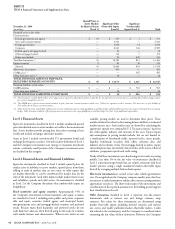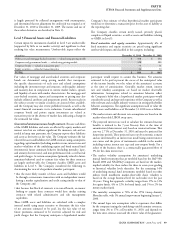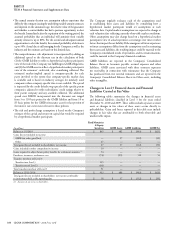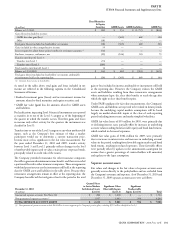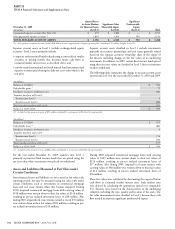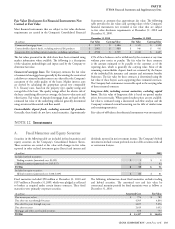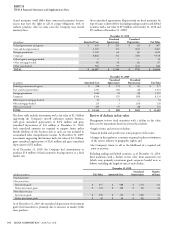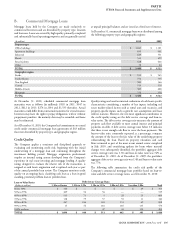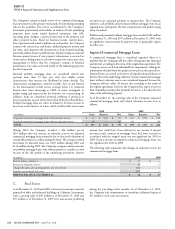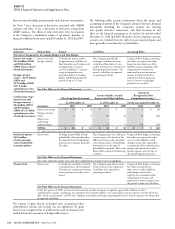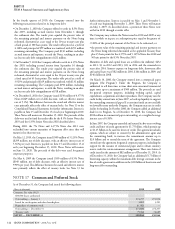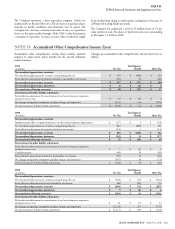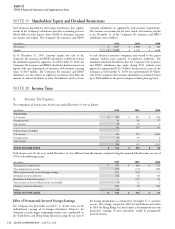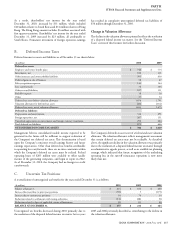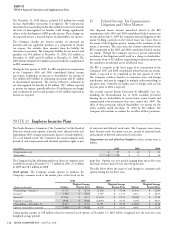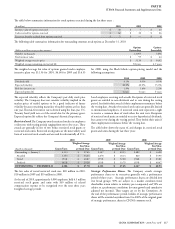Cigna 2010 Annual Report Download - page 127
Download and view the complete annual report
Please find page 127 of the 2010 Cigna annual report below. You can navigate through the pages in the report by either clicking on the pages listed below, or by using the keyword search tool below to find specific information within the annual report.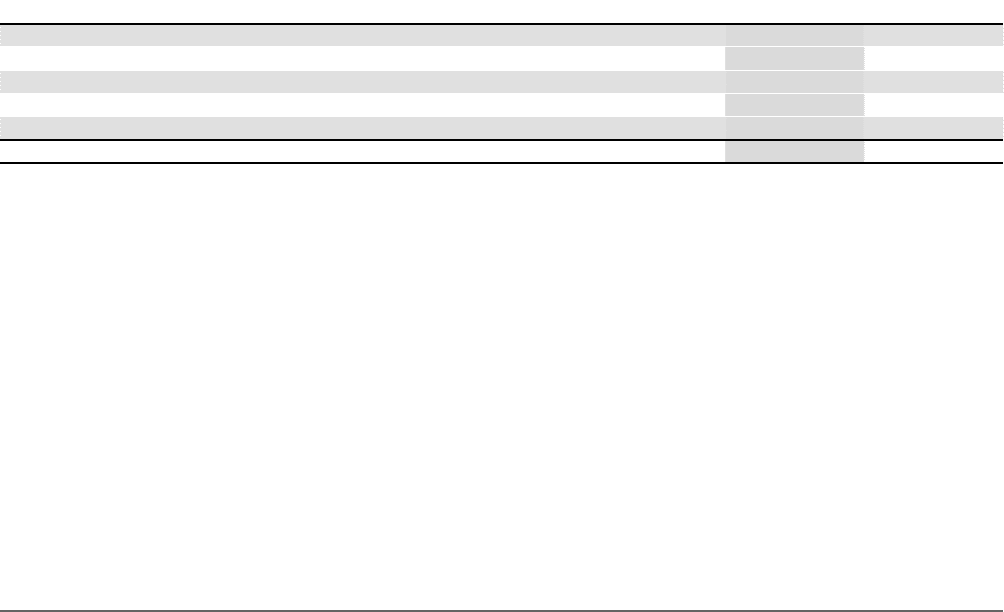
CIGNA CORPORATION 2010 Form 10K 107
PART II
ITEM 8 Financial Statements and Supplementary Data
D. Other Long-term Investments
As of December 31, other long-term investments consisted of the
following:
(In millions)
2010 2009
Real estate entities $ 394 $ 289
Securities partnerships 288 272
Interest rate and foreign currency swaps 19 16
Mezzanine loans 13 13
Other 45 5
TOTAL $ 759 $ 595
Investments in real estate entities and securities partnerships
with a carrying value of $169 million at December 31, 2010 and
$121 million at December 31, 2009 were non-income producing
during the preceding twelve months.
As of December 31, 2010, the Company had commitments to
contribute:
•$224 million to limited liability entities that hold either real estate or
loans to real estate entities that are diversifi ed by property type and
geographic region; and
•$297 million to entities that hold securities diversifi ed by issuer and
maturity date.
e Company expects to disburse approximately 55% of the
committed amounts in 2011.
E. Short-Term Investments and Cash
Equivalents
Short-term investments and cash equivalents included corporate
securities of $1.1 billion, federal government securities of $137 million
and money market funds of $40 million as of December 31, 2010.
e Company’s short-term investments and cash equivalents as of
December 31, 2009 included corporate securities of $624 million,
federal government securities of $402 million and money market
funds of $104 million.
F. Concentration of Risk
As of December 31, 2010 and 2009, the Company did not have a
concentration of investments in a single issuer or borrower exceeding
10% of shareholders’ equity.
NOTE 13 Derivative Financial Instruments
e Company uses derivative fi nancial instruments primarily as
part of a strategy to reduce the equity market exposures relating to
guaranteed minimum death benefi t contracts. Derivative fi nancial
instruments are also used by the Company as a part of its investment
strategy to manage the characteristics of investment assets (such
as duration, yield, currency and liquidity) to meet the varying
demands of the related insurance and contractholder liabilities (such
as paying claims, investment returns and withdrawals). Derivatives
are typically used under this strategy to minimize interest rate and
foreign currency risks. e Company routinely monitors exposure
to credit risk associated with derivatives and diversifi es the portfolio
among approved dealers of high credit quality to minimize this risk.
In addition, the Company has written or sold contracts to guarantee
minimum income benefi ts.
e Company uses hedge accounting when derivatives are designated,
qualify and are highly eff ective as hedges. Eff ectiveness is formally
assessed and documented at inception and each period throughout
the life of a hedge using various quantitative methods appropriate
for each hedge, including regression analysis and dollar off set. Under
hedge accounting, the changes in fair value of the derivative and the
hedged risk are generally recognized together and off set each other
when reported in shareholders’ net income.
e Company accounts for derivative instruments as follows:
•Derivatives are reported on the balance sheet at fair value with
changes in fair values reported in shareholders’ net income or
accumulated other comprehensive income.
•Changes in the fair value of derivatives that hedge market risk related
to future cash fl ows — and that qualify for hedge accounting — are
reported in a separate caption in accumulated other comprehensive
income. ese hedges are referred to as cash fl ow hedges.
•A change in the fair value of a derivative instrument may not always
equal the change in the fair value of the hedged item; this diff erence
is referred to as hedge ineff ectiveness. Where hedge accounting is
used, the Company refl ects hedge ineff ectiveness in shareholders’
net income (generally as part of realized investment gains and
losses).
Certain of the Company’s over-the-counter derivative instruments
contain provisions requiring either the Company or the counterparty
to post collateral depending on the amount of the net liability
position and predefi ned fi nancial strength or credit rating thresholds.
e collateral posting requirements vary by counterparty. e
aggregate fair value of derivative instruments with such credit-risk-
related contingent features where the Company was in a net liability
position was $25 million at December 31, 2010 and $29 million
at December 31, 2009 for which the Company was not required
to post collateral with its counterparties. If the various contingent
features underlying the agreements were triggered as of the balance
sheet date, the Company would be required to post collateral equal
to the total net liability. e Company is a party to certain other
derivative instruments that contain termination provisions for which
the counterparties could demand immediate payment of the total net
liability position if the fi nancial strength rating of the Company were
to decline below specifi ed levels. As of December 31, 2010 and 2009,



